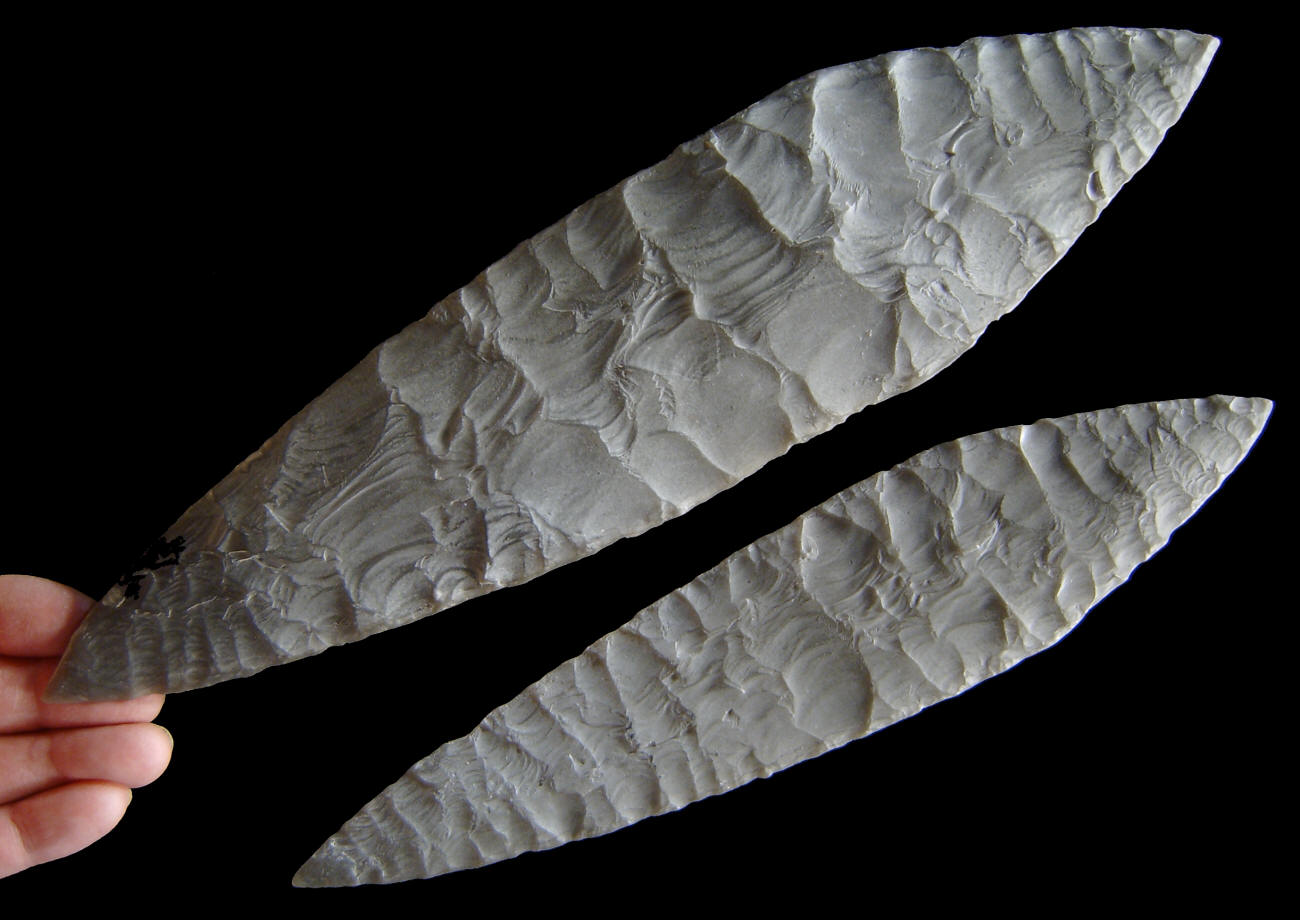|
THE VOLGU LAUREL-
These two Solutrean Laurel-Leaf points were discovered in 1874,
along with twelve other similar points, by workmen engaged in
digging a small canal. They were found approximately one meter (39.4
inches) below the surface. George MacCurdy wrote in 1924 "The points
lay horizontally, not flat but on one edge, and pressed together as
if to avoid breakage through pressure from above." The Volgu cache
or hoard was found
at Le Volgu in the Department (County) of Saonet-et Loire in eastern
France. The Volgu cache
points are the most skillfully crafted stone tools that were
produced during the Solutrean period. MacCurdy further wrote "They
varied in length from 232 to 350 mm (9.1 to 13.8 inches), in breadth
from 50 to 88 mm (2 to 3.4 inches), and in thickness from 6 to 9 mm
(.2 to .4 inches)." The largest example measures
13 3/4 inches (35 cm)
long and is slightly more than 1/4 inch (6 mm) thick.
|
